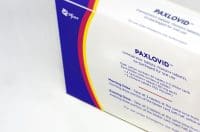American Diabetes Association releases food guidelines for specific medical categories
“When you’re talking about diabetes, there is no ‘one size fits all’ diet,” said Ann Albright, PhD, RD, President-Elect, Health Care & Education, American Diabetes Association (ADA). And the new ADA guidelines make that clear by providing specific advice on nutrition, based on a person’s medical condition. Recommendations are tailored for people at high risk for diabetes, people who are managing their diabetes, and people trying to prevent or slow the development of diabetes complications. The new guidelines also address nutrition for those with type 1 diabetes, pregnant or breast-feeding mothers with diabetes, older adults, people living in long-term care facilities, and those with acute illnesses such as kidney disease. The recommendations emphasize the importance of sustained, moderate weight loss for people who are overweight or obese and increased physical activity for all people at risk for or living with diabetes.
www.diabetes.org
Breast-feeding relieves pain in newborns
Newborns endure painful needle sticks or heel pricks during the first 24 hours of life so medical teams can screen blood for disease or rare genetic disorders. Now, a recent review of 11 studies covering more than 1,000 babies indicates that breast-feeding eases the pain. Just how breast-feeding does this isn’t known. However, the analgesic effect may result from a combination of factors, including the mother’s comforting presence, skin-to-skin contact, attention diversion, and the sweetness of the milk.
www.docguide.com/news/content.nsf/news/
852571020057CCF6852571B30055114D
DEFLUX should be first-line treatment for vesicoureteral reflux
In a recent study, more than 90% of children with vesicoureteral reflux were cured after two treatments with DEFLUX (non-animal stabilized hyaluronic acid/dextranomer gel). About 82% were cured after just one treatment. Based on these results, the researchers recommend DEFLUX, which is administered during a 15-minute outpatient procedure, as a first-line treatment for vesicoureteral reflux, the most common urinary tract abnormality in children. Currently in the United States, most children with vesicoureteral reflux either receive antibiotic therapy or undergo an invasive surgical procedure.
www.docguide.com/news/content.nsf/news/852571020057CCF6852571DB0046ABD9
Pressure bandage reduces postop nausea and vomiting
A new acupressure wristband called Pressure Right™ appears to lower the incidence of nausea and vomiting in postop patients who are at high risk for these complications. According to the director of a study on the pressure bandage, patients wore the wristbands on both wrists for at least 24 hours after surgery, and no adverse effects occurred. The wristbands are intended as a low-cost device to be used with antiemetic drug therapy.
http://mmdnewswire.com/content/view/523/5/
First new drug for dangerous staph infections in years
The Food and Drug Administration (FDA) has approved daptomycin for treating heart infections and bacteremia from Staphylococcus aureus, a major cause of sickness and death worldwide. According to Vance G. Fowler Jr., MD, who participated in the study, “This is the first new drug the FDA has approved in two decades for treating these types of potentially life-threatening infections.” The drug was originally approved in 2003 for treating skin infections caused by
S. aureus. But until recently, there was no definitive proof that the drug would be effective against the more serious bloodstream and heart infections.
www.dukemednews.duke.edu/news/article.php?id=9850
Uncontrolled diabetes linked to later development of dementia
Patients with type 2 diabetes who don’t keep their blood glucose levels well-controlled are at high risk for developing Alzheimer’s disease and other dementias, according to research presented at the 10th International Conference on Alzheimer’s Disease and Related Disorders in July. Researchers estimate that diabetics with hemoglobin A1c levels above 15% have a 78% greater risk of developing dementia, Alzheimer’s disease, or cognitive decline within 10 years. The study, which enrolled patients older than age 50, examined patients’ medical records for hospital codes indicating treatment for dementia between 1997 and 2005. Those with the least glycemic control had the greatest increase in dementia risk.
www.alz.org/icad/
HIV drug “holidays” do more harm than good
A new analysis of existing research shows that taking a “holiday” from drugs that fight human immunodeficiency virus (HIV) disease does more harm than good for patients with uncontrolled HIV disease. Of the 17 studies reviewed, eight were randomized controlled trials. Researchers found no evidence that drug-free intervals were helpful; in fact, some studies suggested they may worsen HIV infection by letting the immune system deteriorate and allowing HIV to progress. The review was published in the Cochrane Library.
www.cochrane.org/reviews/en/ab006148.html
Pill to prevent HIV looks promising
In an experiment in Africa, the first test of a daily drug to prevent HIV infection appeared to be successful. At the start of the study, none of the subjects (all women) were infected with HIV. They were assigned randomly to receive either tenofovir disoproxil fumarate (Viread) or dummy pills; all received condoms and counseling. Fewer subjects taking Viread became infected with HIV than those taking the dummy pills. However, scientists say, so few women in either group became infected that valid comparisons can’t be made. The results of the experiment were released August 12 at the International AIDS Conference.
www.kaisernetwork.org/Daily_reports/rep_hiv.cfm
Researchers close in on possible blood test for “mad cow” disease
Animal studies suggest it may be possible to develop a blood test for bovine spongiform encephalopathy (or “mad cow” disease) and related diseases in humans before symptoms develop. In a study published in the July 7 issue of Science, researchers infected hamsters with prions, the nerve proteins thought to cause these diseases. They tested the hamsters’ blood at various times and detected prions during the “silent phase” of infection (which can last up to 40 years in humans). In addition to permitting testing of animals for mad cow disease before they enter the food supply, the new test method could be used to screen people for Creutzfeldt-Jakob disease (the human form of mad cow disease).
www.sciencemag.org/cgi/content/short/313/5783/92
Study finds ultra low-dose estrogen safe for postmenopausal women
New research shows that extremely low estrogen doses delivered by skin patch over 2 years to postmenopausal women don’t affect cognitive abilities or general health. In the study, published in the July issue of the Archives of Neurology, a group of 417 women were randomly assigned to receive a daily 0.014-mg dose of either estradiol (a form of estrogen) or placebo. Subjects took a battery of standardized cognitive tests and a test of health-related quality of life at the start of the study, after 1 year, and after 2 years. At the end of the study, the two groups showed no difference in cognitive abilities or health-related quality of life.
http://archneur.ama-assn.org/cgi/content/short/63/7/945
Amethocaine is better than EMLA at preventing needle insertion pain in children
A new review of studies suggests that amethocaine prevents pain more effectively than EMLA in children undergoing I.V. cannulation or venipuncture. Although both preparations were effective, amethocaine was better at easing pain and didn’t need to be applied as far in advance as EMLA. To assess the children’s pain, researchers used several methods, but primarily heard reports from the children or had observers assess their behavior (such as crying or grimacing). The review was published in the Cochrane Library.
www.mrw.interscience.wiley.com/cochrane/clsysrev/articles/CD004236/frame.html)


















